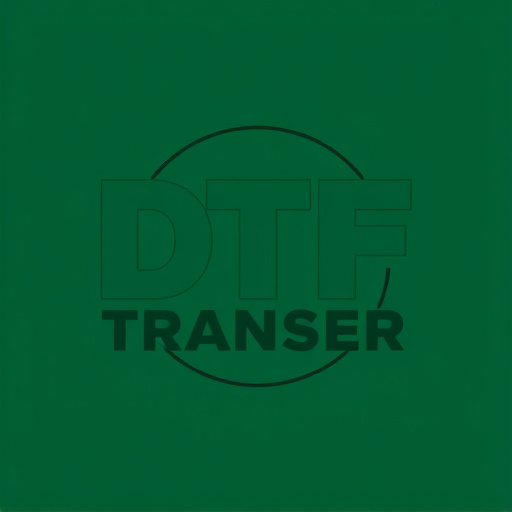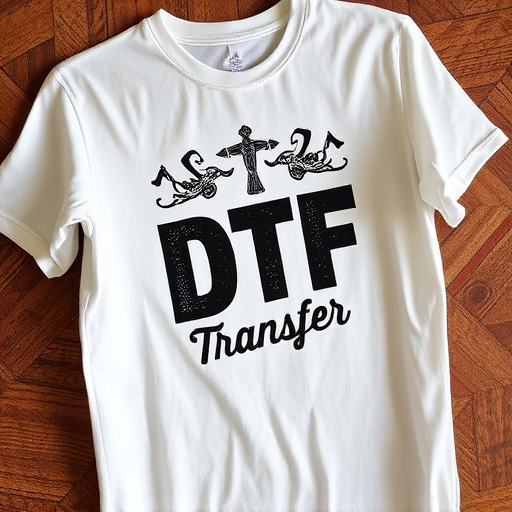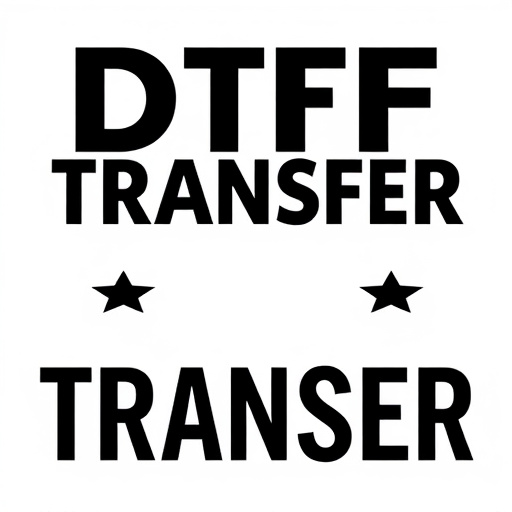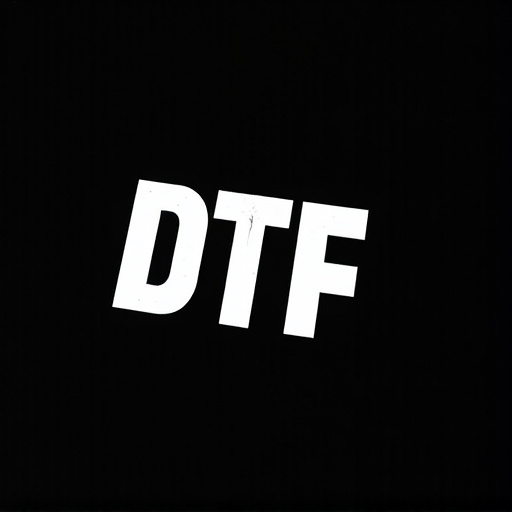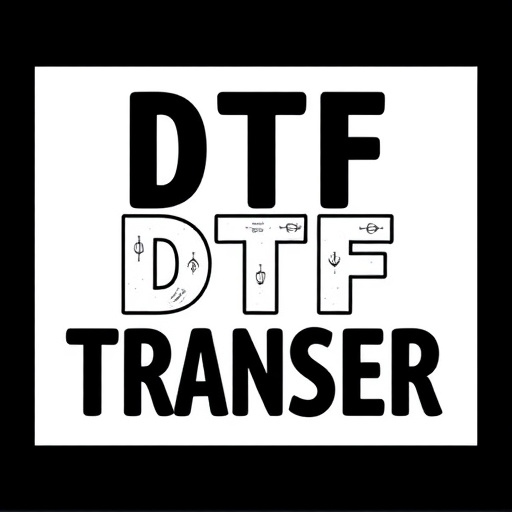DTF (Direct to Fabric) Printing is a cutting-edge technique enabling designers to produce vibrant, high-resolution transfers for dark fabrics. By bypassing traditional printing methods, it offers exceptional color saturation, durability, and water resistance. This game-changing method is suitable for apparel, accessories, and home decor, allowing intricate patterns to pop against darker backgrounds. With the right inks and substrates, DTF Printing enhances the visual appeal of dark fabric products, from fashion pieces to custom home furnishings.
In the world of textiles, DTF (Direct-to-Fabric) printing has emerged as a game-changer, offering vibrant solutions for dark-colored fabrics. This innovative technology allows for stunning, high-quality designs on a range of materials, overcoming the challenges traditionally associated with printing on darker hues. From understanding the fundamentals of DTF Printing to exploring its creative applications, this article delves into the process, best practices, and tips for achieving vivid, eye-catching results on dark textiles.
- Understanding DTF Printing: A Vibrant Solution for Dark Fabrics
- The Appeal of Dark-Colored Fabrics and Their Challenges
- How DTF Printing Technology Works Its Magic
- Choosing the Right Ink and Substrates for Optimal Results
- Creative Applications of DTF Printing on Dark Textiles
- Tips and Best Practices for Achieving Vivid Designs
Understanding DTF Printing: A Vibrant Solution for Dark Fabrics
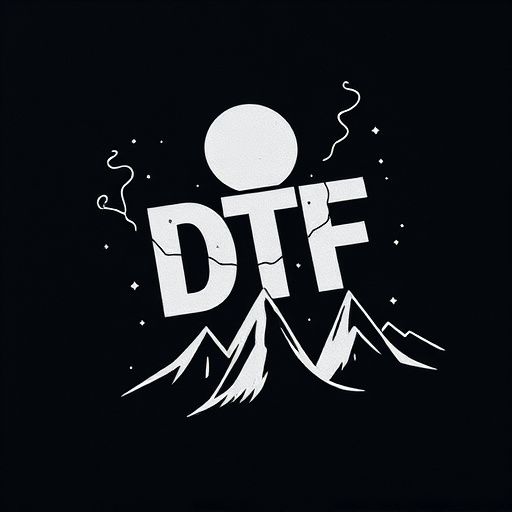
DTF (Direct to Fabric) Printing is a game-changer when it comes to producing vibrant and eye-catching transfers for dark-colored fabrics. This innovative technique allows designers and manufacturers to create intricate patterns and images with exceptional color saturation, ensuring that the final product pops against deeper shades. Unlike traditional printing methods that might struggle with dark backgrounds, DTF offers a solution by directly applying ink to the fabric’s surface, bypassing the need for a white or light-colored base.
By utilizing specialized inks and precise printing technology, DTF Printing produces high-resolution transfers that are both durable and water-resistant. This makes it an ideal choice for various applications, from apparel and accessories to home decor items. With its ability to capture complex details and maintain color intensity, DTF Printing ensures that designs on dark fabrics remain visually stunning, making it a preferred method for those seeking to create captivating, on-trend garments and products.
The Appeal of Dark-Colored Fabrics and Their Challenges

Dark-colored fabrics have gained significant popularity in recent times, especially in the fashion and textile industries. This shift can be attributed to several factors, including their ability to create a striking visual impact and their versatility in various designs. DTF (Direct to Fabric) Printing, a cutting-edge technique, has further revolutionized the way we approach these fabrics. It allows for vibrant and intricate patterns that truly pop against the dark backdrop, opening up new creative possibilities.
However, working with dark-colored fabrics presents unique challenges. The absorption of light by darker hues can make it difficult to achieve bright, vivid colors in printed designs. This is where DTF Printing excels; it employs specialized inks and technologies to overcome this hurdle. By carefully selecting the right ink types and printing conditions, practitioners can produce stunning, eye-catching transfers that not only complement but enhance the inherent depth and richness of dark fabrics.
How DTF Printing Technology Works Its Magic
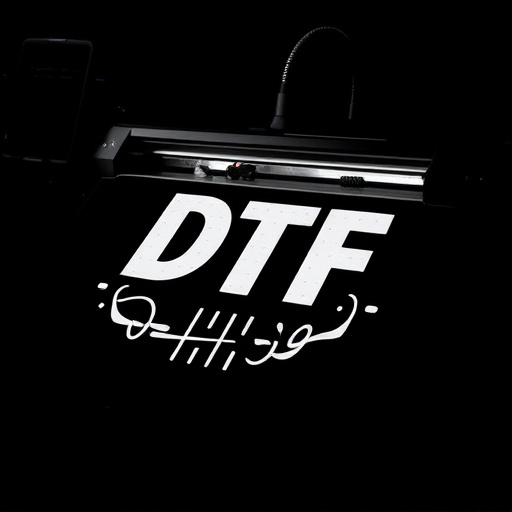
DTF (Direct-to-Fabric) Printing is a revolutionary technology that brings vibrant color and intricate designs to dark fabrics, making them pop like never before. This cutting-edge method eliminates the need for traditional printing processes on light-colored materials, which often require multiple layers of transparent ink to achieve depth and richness.
The magic happens when specialized printers deposit pigment directly onto the fabric’s surface using a precisely controlled jet of liquid dye. This direct application ensures optimal color saturation, allowing for bold, vibrant transfers that are truly eye-catching. DTF Printing is not only effective on black or dark garments but also offers exceptional results on various materials, including cotton, polyester, and even some types of plastics, opening up a world of design possibilities for fashion, sportswear, and promotional merchandise.
Choosing the Right Ink and Substrates for Optimal Results
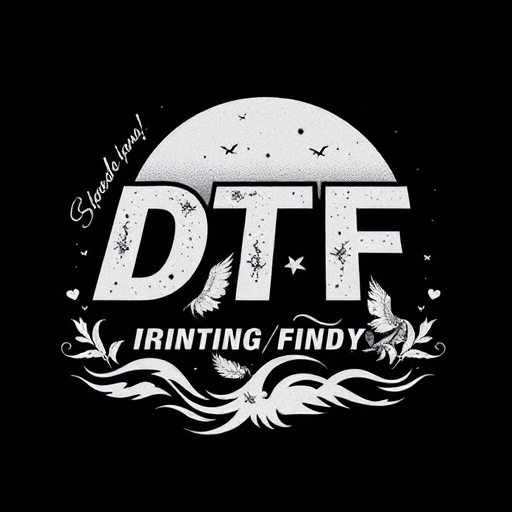
When it comes to creating vibrant transfers for dark-colored fabrics, selecting the appropriate ink and substrate is key. Digital Thermal Transfer (DTF) Printing offers a range of options tailored for this specific need. For optimal results, choose inks designed with high pigment concentrations that are specifically formulated to adhere well to various materials. Dark fabric dyes often require inks with enhanced color saturation to ensure the final design isn’t muted or washed out.
The choice of substrate is equally important. Look for transfer papers made from materials like polyestere or coated fabrics, which have excellent dye-penetration properties and fix firmly to dark surfaces. These substrates are engineered to withstand washing without fading or peeling, ensuring your designs maintain their vibrancy even after repeated use.
Creative Applications of DTF Printing on Dark Textiles
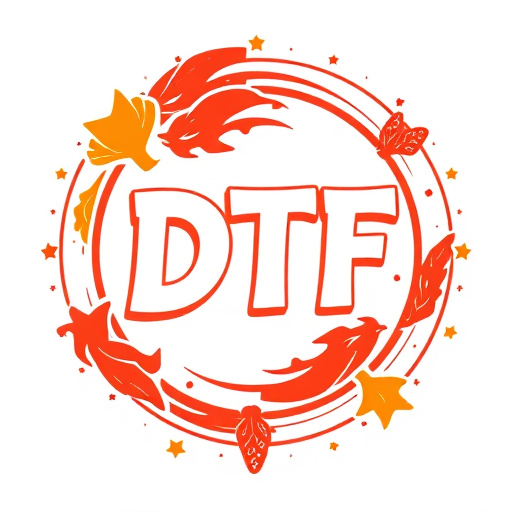
DTF (Direct to Fabric) Printing has opened up a world of creative possibilities for designers and manufacturers, especially when applied to dark-colored fabrics. By utilizing this innovative technique, vibrant and eye-catching transfers can be achieved that truly pop against darker backgrounds. From fashion to home decor, DTF Printing allows for intricate patterns and bold graphics to be seamlessly integrated into textiles. For instance, clothing brands are experimenting with this method to create unique, limited-edition pieces, where the design almost seems to merge with the fabric itself.
Moreover, interior designers can leverage DTF Printing to produce custom throw pillows, curtains, or wall hangings that feature striking, immersive artwork. The process enables the reproduction of high-resolution images and complex color palettes, ensuring that the final product maintains its visual impact. This technology has democratized access to creative expression, empowering individuals and businesses to transform ordinary fabrics into extraordinary works of art.
Tips and Best Practices for Achieving Vivid Designs
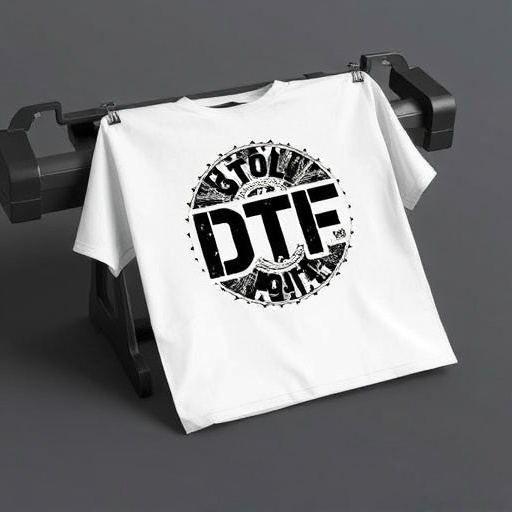
When designing transfers intended for dark fabrics, utilizing DTF (Direct-To-Fabric) printing techniques can significantly enhance vibrancy. Start by selecting high-quality transfer paper with a strong adhesive suitable for dark backgrounds. The ink choices matter too; opt for vibrant, light-fast inks designed specifically for fabric printing to ensure colors remain bright and don’t fade over time.
Pre-treating the fabric is another best practice. Cleaning and preparing the surface ensures a smooth printing process and better adhesion. Consider testing different print settings on your machine—optimal temperature, pressure, and duration can vary based on the fabric type and ink used. Always follow manufacturer guidelines for best results, and remember to allow adequate drying time after printing to prevent smudging or transferring issues.









